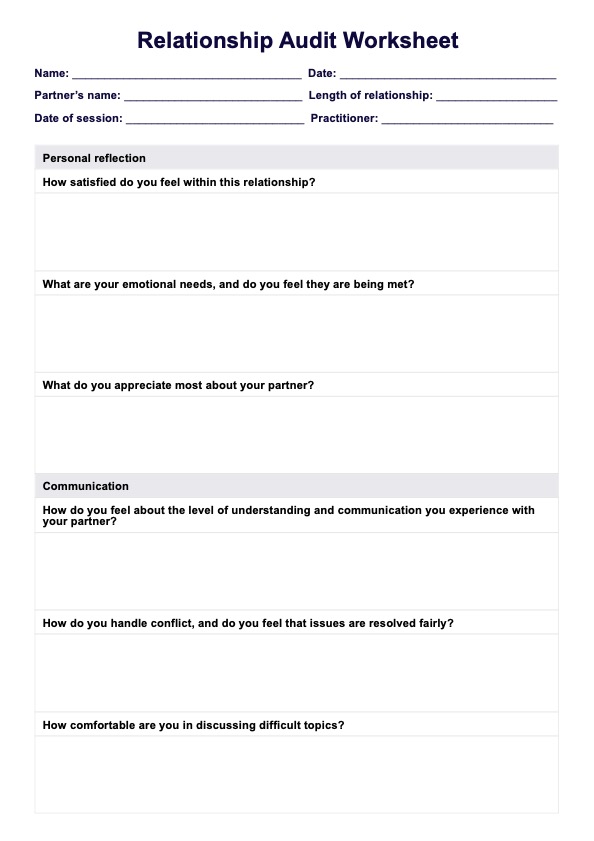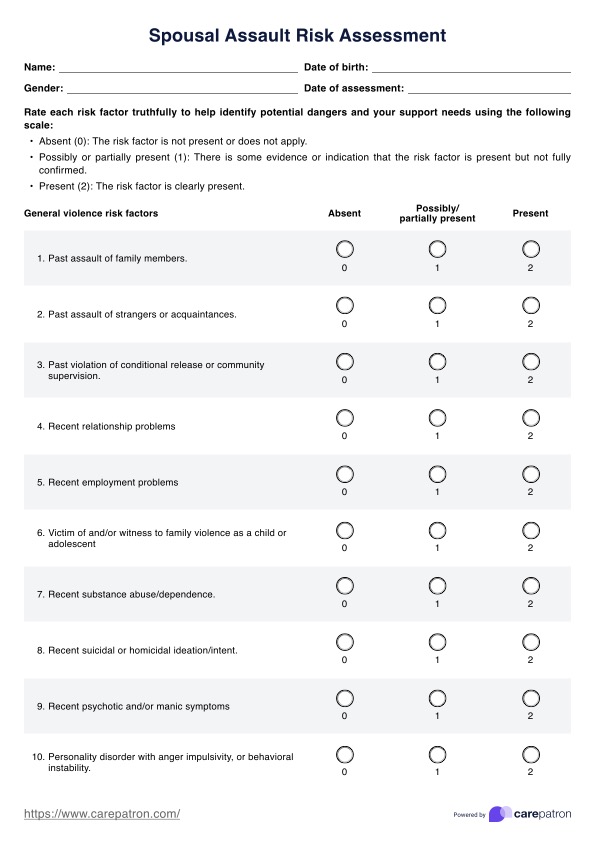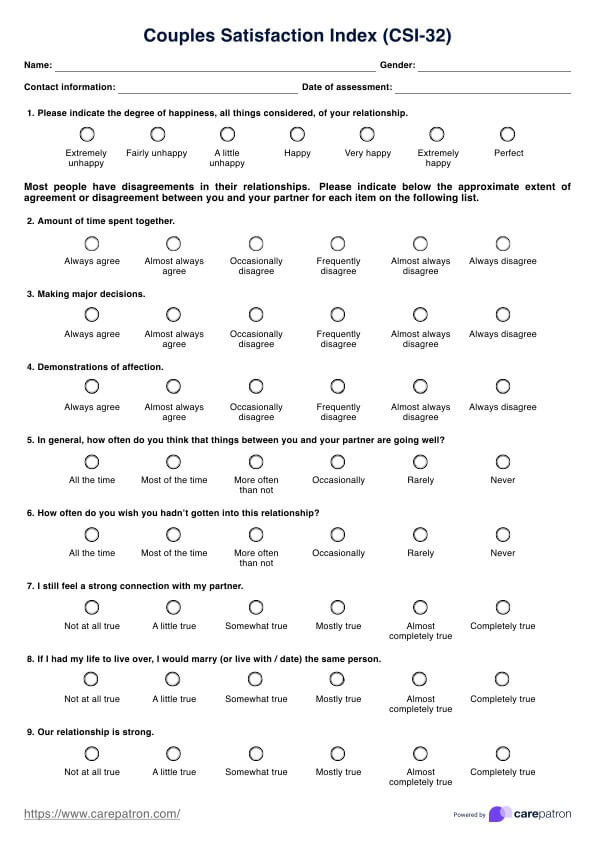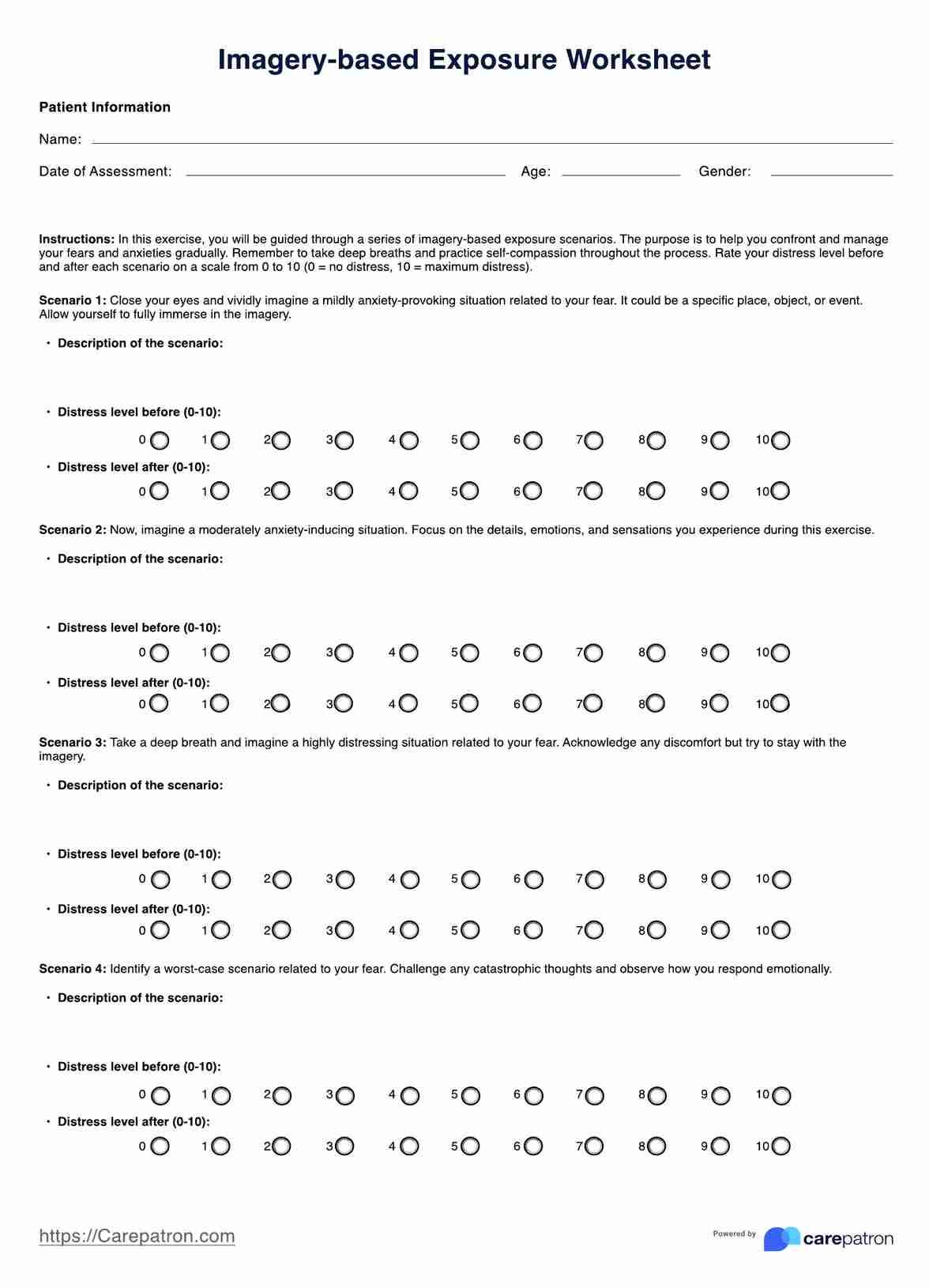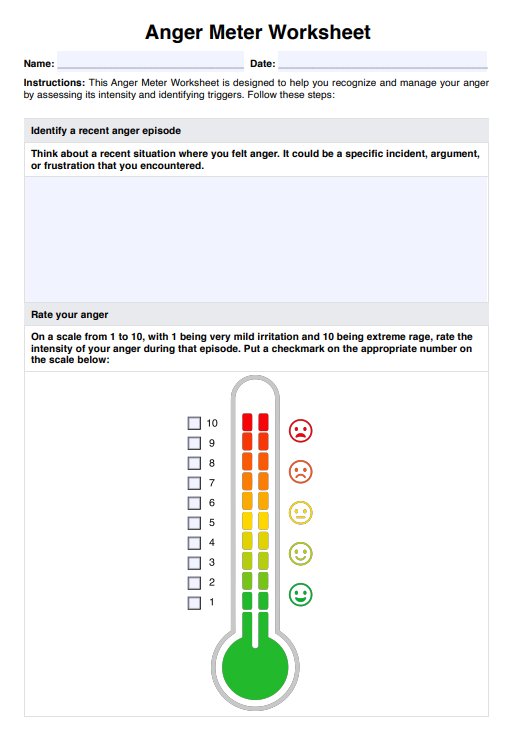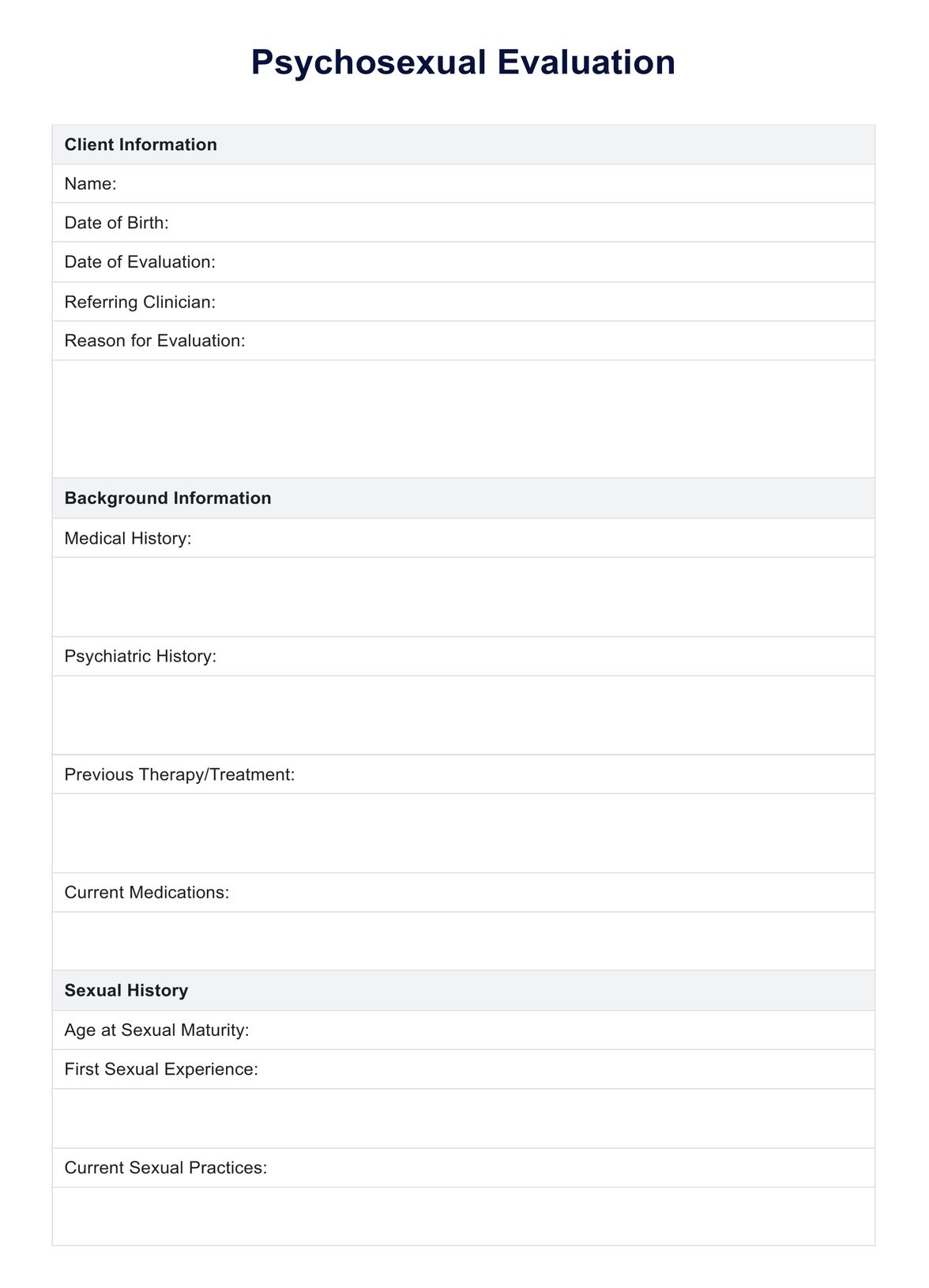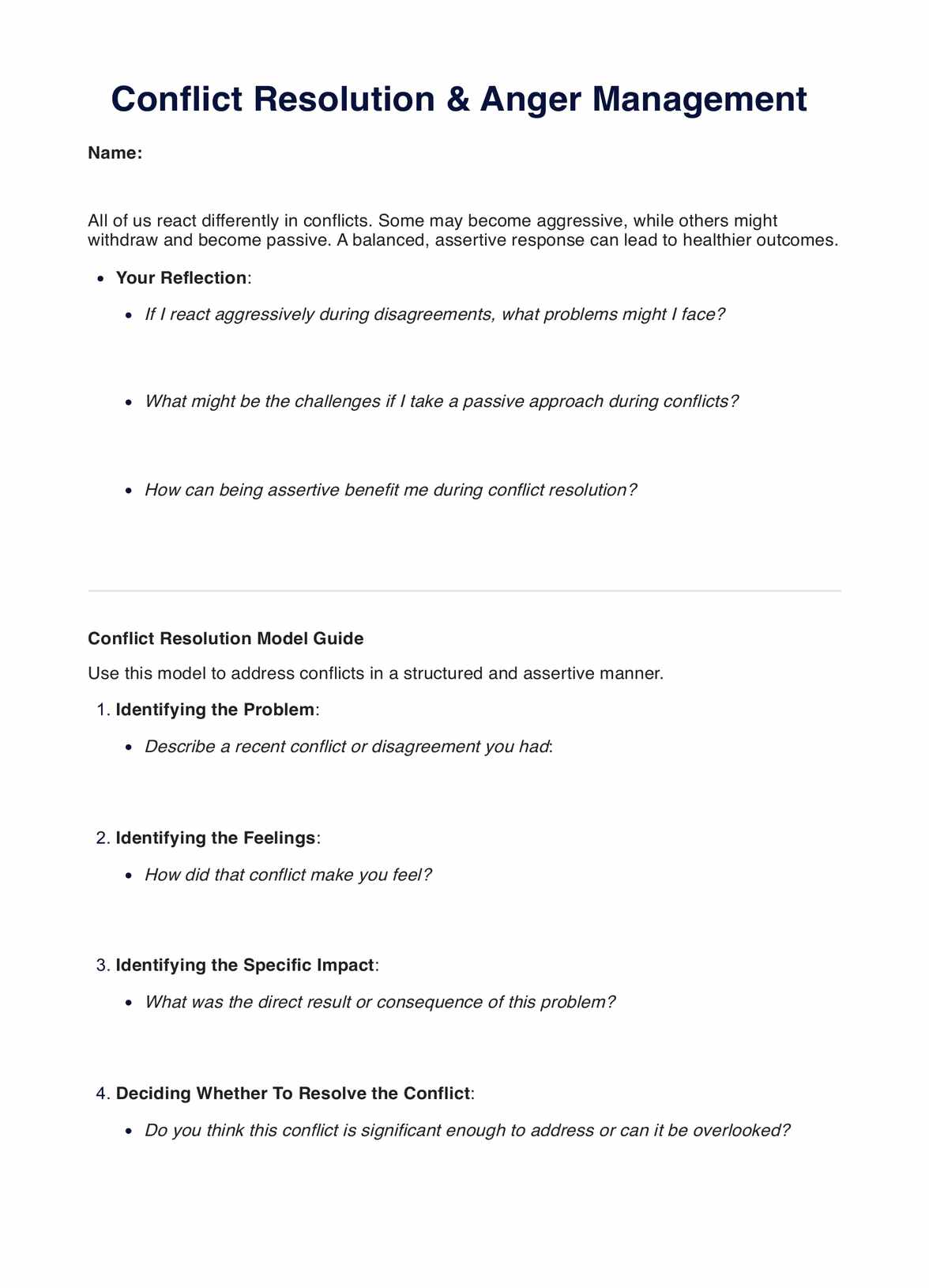Cycle Of Abuse Wheel
Access Carepatron's free Cycle of Abuse Wheel PDF for clinical use. Identify patterns, support interventions, and enhance patient care today.


What is a Cycle Of Abuse Wheel?
The Cycle of Abuse Wheel is a framework that illustrates the repetitive patterns seen in abusive relationships. Developed by psychologist Lenore Walker (1979), it outlines the progression of domestic violence through predictable stages. This cycle highlights how abusive behavior is not random but follows a recurring pattern, keeping victims trapped in relationship abuse.
The cycle consists of four phases—tension building, abusive incident, honeymoon phase or reconciliation, and calm (Rakovec-Felser, 2014). During the tension-building phase, abuse escalates, leading to increased emotional distress. The abusive incident marks the peak, often involving physical abuse, physical violence, or severe emotional harm. The honeymoon phase follows, where the abusive partner may show remorse, reinforcing false hope that the relationship will improve. The calm phase creates a temporary illusion of stability before tension rises again.
This cycle is closely related to the power and control wheel, which explains the tactics used to manipulate and dominate victims. Understanding these patterns is critical for mental health professionals in recognizing domestic violence dynamics and providing interventions. The National Domestic Violence Hotline and other organizations and resources emphasize breaking this cycle to prevent ongoing harm. Identifying these behaviors allows professionals to intervene before abuse escalates further.
Cycle Of Abuse Wheel Template
Cycle Of Abuse Wheel Example
The 4 phases of abuse
Abuse in an intimate relationship follows a predictable pattern known as the cycle of abuse, which keeps victims trapped in domestic abuse. This cycle consists of four distinct phases: tension-building, acute battering, honeymoon, and calm. Each phase plays a role in reinforcing emotional manipulation, making it difficult for victims to break free. These stages contribute to battered woman syndrome and perpetuate intimate partner violence. Understanding how these phases function is essential for recognizing patterns of emotional abuse, financial abuse, sexual violence, and other forms of control that abusers use to maintain power over their victims.
Tension-building phase
This phase marks the slow building tension in the relationship, where minor conflicts escalate due to external stressors such as financial control, parenting disagreements, or job-related pressures. The abuser becomes increasingly irritable and aggressive, displaying verbal abuse, emotional abuse, and controlling behavior. The victim often feels like they are "walking on eggshells" to prevent an outburst. While physical violence may not yet occur, emotional manipulation and intimidation are present. Victims experiencing abuse at this stage may justify the abuser’s behavior, hoping to restore peace. However, unresolved tensions continue to rise, leading directly into the next, more violent phase.
Acute battering episode
This phase is the most dangerous, as intimate partner violence reaches its peak. The abuser exerts total control through physical violence, sexual violence, or extreme psychological aggression. External stressors may trigger the attack but is not caused by the victim’s actions. The violence is often unpredictable and leaves the victim feeling helpless and afraid. In many cases, victims of domestic abuse attempt to minimize the severity of the incident or blame themselves, making it harder to leave the same relationship. This stage solidifies battered woman syndrome, as victims endure repeated trauma and struggle to seek help.
The honeymoon or reconciliation phase
After an abusive incident, the abuser may appear genuinely ashamed, expressing remorse through apologies, gifts, and affectionate gestures. They may promise to change, seek counseling, or blame their actions on stress or external factors. The victim, hoping for the relationship to improve, may forgive the abuser. However, this emotional manipulation fosters a false sense of security. Victims may rationalize staying, believing the abuse will not happen again. This phase is crucial in maintaining the cycle of abuse, as it reinforces hope while ensuring the victim remains entangled in the intimate relationship, unable to break free permanently.
The calm
During this stage, the relationship appears stable, as the abuser behaves lovingly or avoids conflict altogether. This period of calm stages creates the illusion that the abuse is over. However, underlying control mechanisms, such as financial abuse or emotional dependence, remain. The victim may feel relief, reinforcing their belief that the abuser has changed. Unfortunately, without addressing the root causes of domestic abuse, the cycle inevitably restarts, bringing the victim back to the tension-building phase. This repetitive nature of abuse highlights why professional intervention is necessary to help victims recognize patterns and seek safety before abuse escalates again.
How does our Cycle of Abuse Wheel work?
The Cycle of Abuse Wheel is a valuable tool for medical professionals to assess and support individuals affected by domestic abuse. Carepatron provides an accessible Cycle of Abuse Wheel template that can be used in patient evaluations to identify patterns of abuse and guide appropriate interventions. Follow these steps to integrate this resource into your practice.
Step 1: Access the handout
To begin using the Cycle of Abuse Wheel, click the “Use template” button, where you can customize the file within the Carepatron platform. You can also click on "Download" to get a PDF file.
Step 2: Use the handout in patient assessment
Once downloaded, use the Cycle of Abuse Wheel to assess patients who may be experiencing intimate partner violence. The structured framework helps identify behavioral patterns, clarifying whether a patient is caught in a recurring cycle. This resource is particularly useful for mental health professionals, social workers, and clinicians evaluating signs of abuse escalation.
Step 3: Discuss how each cycle of abuse looks like
Medical professionals can guide patients through each phase of the cycle, using the Cycle of Abuse Wheel as a reference. Discuss how tension-building, battering incidents, honeymoon phases, and calm periods contribute to ongoing relationship abuse. By visualizing the cycle, patients may better recognize abusive patterns and understand that the abuse is not their fault.
Step 4: Provide patient support and next steps
After assessing the patient’s situation, offer supportive resources and next steps. This may include safety planning, referrals to domestic violence hotlines, or connecting patients with therapists and legal aid. The Cycle of Abuse Wheel is an educational and intervention tool, equipping professionals to help patients navigate options and regain control of their lives.
Benefits of using this wheel chart
The Cycle of Abuse Wheel offers several practical benefits for medical professionals working with individuals affected by domestic abuse. It provides a clear, structured framework for identifying the repeating pattern of abusive behavior in relationships. By using this tool, healthcare providers gain a deeper understanding of how abusive relationships develop and escalate over time.
The wheel charts each phase of the cycle, including the tension building stage, where tension begins to escalate due to silent treatment or other forms of emotional abuse. Recognizing these early signs can help medical professionals intervene before abuse starts to escalate into physical violence. Understanding the full cycle enables providers to address immediate symptoms and the root causes of abuse.
By using the wheel in patient assessments, healthcare professionals can effectively identify patterns, facilitate discussions about abuse, and ensure timely referrals to support services. This tool enhances workflows by streamlining assessments, improving patient care, and enabling effective intervention strategies.
References
Rakovec-Felser Z. (2014). Domestic violence and abuse in intimate relationship from public health perspective. Health Psychology Research, 2(3), 1821. https://doi.org/10.4081/hpr.2014.1821
Walker, L. E. A. (1979). The battered woman syndrome. Springer Publishing Company. https://books.google.com.ph/books?hl=en&lr=&id=Rq8-DAAAQBAJ&oi=fnd&pg=PP1&ots=PCV-3_19wL&sig=T2anCysTk0832jcNhTedjuFAK_M&redir_esc=y#v=onepage&q&f=false
Commonly asked questions
The cycle of abuse consists of four stages: tension-building, acute battering, honeymoon, and calm. This repeating pattern keeps victims trapped as tension begins, abuse starts, temporary remorse follows, and the cycle resets.
Common signs include verbal abuse, silent treatment, emotional manipulation, financial control, and physical violence. Victims often feel isolated, fearful, and unable to break free due to ongoing psychological and emotional distress.
Abusive relationships severely impact mental health, leading to anxiety, depression, PTSD, and low self-esteem. The prolonged exposure to domestic abuse can cause emotional numbness, learned helplessness, and difficulty forming healthy relationships.


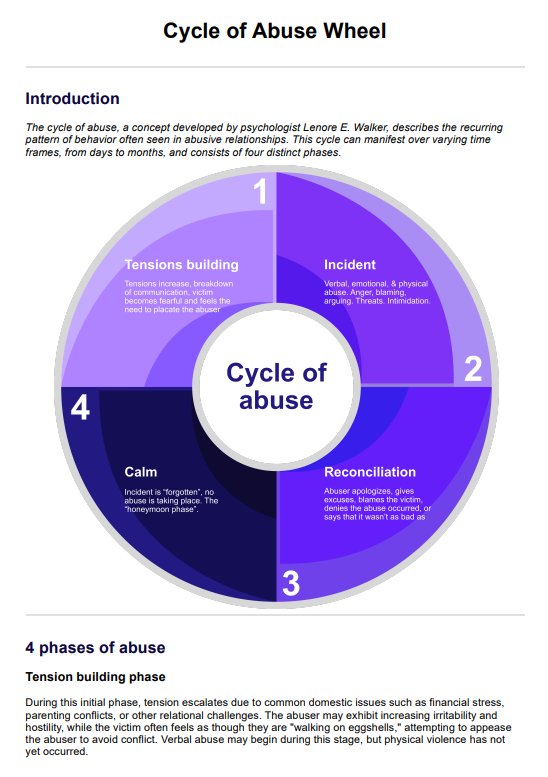


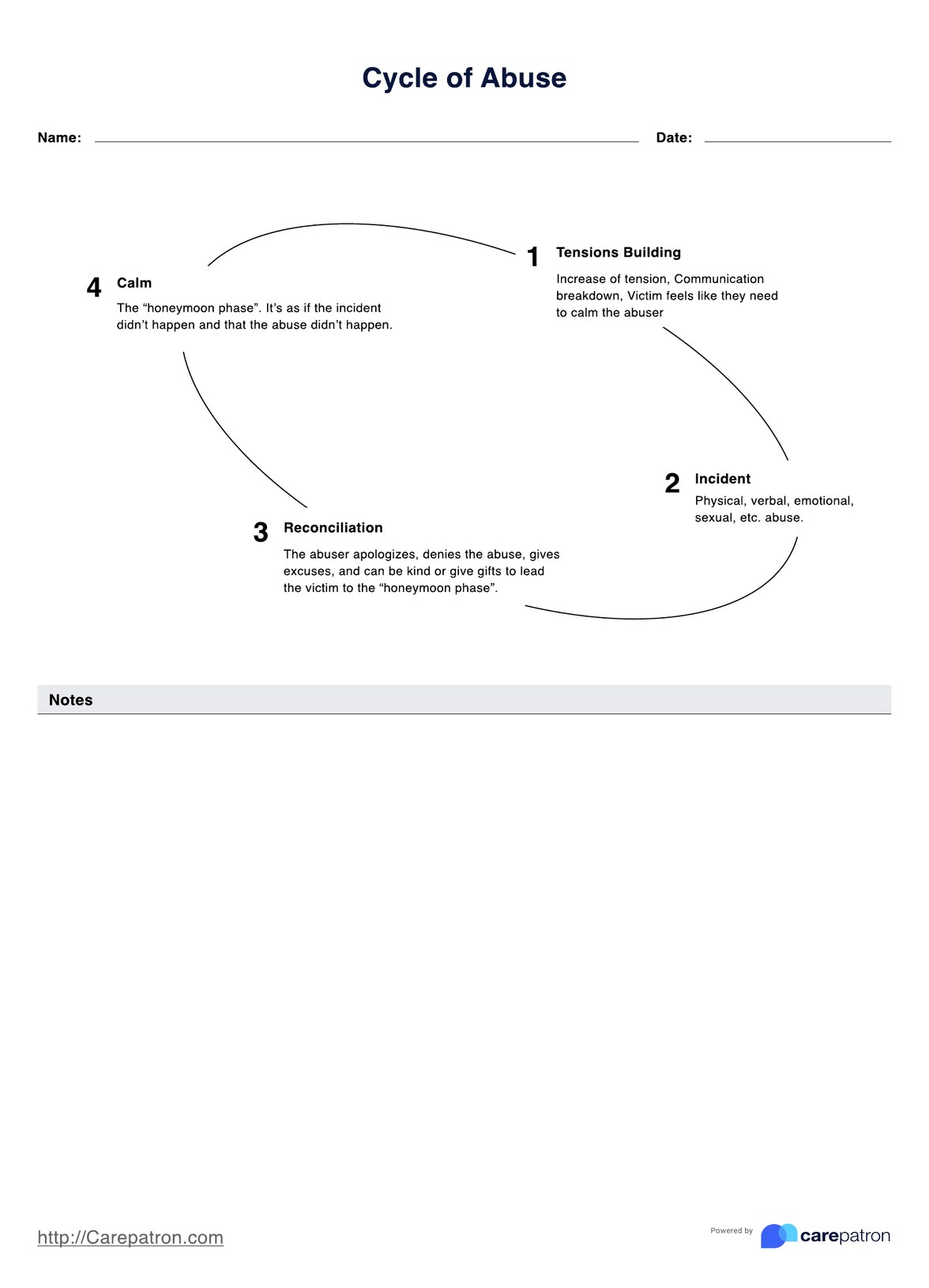












-template.jpg)


